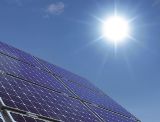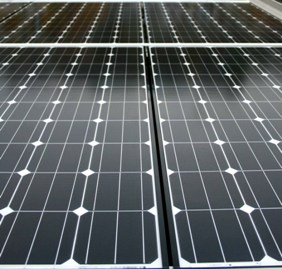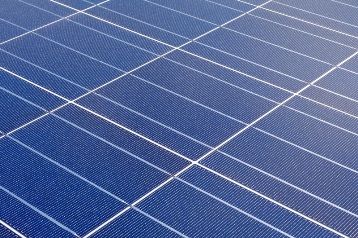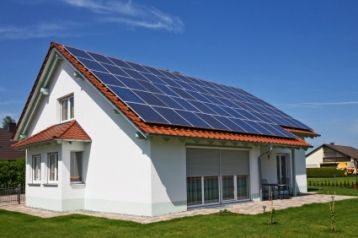The practice of using mono and polycrystalline photovoltaic modules in solar panels
The article discusses the practical use of silicon mono and polycrystals in the production of various types of modern solar cells, as well as the differences between these existing types of solar modules.
 Many people on earth are still largely dependent on such energy sources as gas, firewood, fuel oil, kerosene, etc., which further harm the environment. Therefore, the introduction of alternative sources of energy into their lives, such as wind, solar radiation, hydropower, benefits them both from an ecological, moral and economic point of view.
Many people on earth are still largely dependent on such energy sources as gas, firewood, fuel oil, kerosene, etc., which further harm the environment. Therefore, the introduction of alternative sources of energy into their lives, such as wind, solar radiation, hydropower, benefits them both from an ecological, moral and economic point of view.
In the future development of mankind, non-renewable energy sources will most likely leave the energy arena for their provision and their place will be taken renewable energy sources, such as wind, hydro and solar energy. It is about the energy of solar radiation and the possibility of its use by people, and we will talk with you today in our article.
What are monocrystalline and polycrystalline photovoltaic modules?
Currently, of all types of solar cells, the most widespread among the population are solar panels: monocrystalline and polycrystalline, the latter of which are often also called "multicrystalline solar panels".
Monocrystalline panels.
A structurally monocrystalline panel consists of tens of silicon PV modulescollected in one panel. These photovoltaic cells are mounted in a reliable and durable fiberglass housing that provides good protection for these photovoltaic modules, both from dust and atmospheric humidity.
Such a panel design of solar panels allows them to work in a variety of conditions — both at sea and on land. The transformation of solar light energy in solar panels into electrical energy occurs due to the photoelectric effect of energy conversion in the photovoltaic modules of the solar panels themselves.

The material for the production of monocrystalline solar panels is ultrapure silicon, which is also used for the production of semiconductor devices in electronics and has been well adopted by modern industry. The rods of silicon single crystal, slowly grow «and are pulled from the silicon melt, then they are cut into pieces with a thickness of 0.2-0.4 mm and are already used after their subsequent processing for the production of photovoltaic cells that form solar energy panels .
The practice of using modern solar panels shows that for many years one of the most popular and sought after in the world — monocrystalline solar panels have existed. The efficiency of monocrystalline panels is approximately 15-17%.
Polycrystalline panels.
When the silicon melt is slowly cooled, polycrystalline silicon is obtained from it, which is used to make polycrystalline solar panels. In this case, the operation of withdrawing silicon crystals from the melt is completely omitted, and the process itself is less labor-intensive than in the production of monocrystalline silicon and, accordingly, such solar cells are cheaper. However, a significant disadvantage of polycrystalline silicon is that it has regions with granular boundaries that slightly degrade its quality.

The frame of polycrystalline solar cells (modules) is made of aluminum and coated with a special anti-corrosion compound, which is black. High quality and durability of such a structure is achieved here by securely fixing the foil on the back of each frame and tightly sealing the edges. All elements of a polycrystalline solar panel are covered with a special laminate, resistant to temperature extremes, as well as to the effects of snow and rain.
In order to answer the question of which is better — «mono» or «poly» crystals and, accordingly, the types of solar cells, you must first understand their differences and similarities.
The main differences between «mono» and «poly» crystalline types of solar cells.
1. The main and fundamental difference between these two types of solar cells is their efficiency in converting solar energy into electricity. Today's monocrystalline panels during mass production have solar energy conversion efficiency up to a maximum of 22%, and those used in space technology even up to 38%. This is due to the purity of the silicon single crystal raw material, which in such batteries reaches almost 100%.
For commercially available polycrystalline panels, the efficiency of converting solar energy into electricity is much lower than that of monocrystalline panels and is a maximum of 18%. Such low efficiency indicators for this type of batteries are due to the fact that for their production, not only pure primary silicon is used, but also raw materials from recycled solar cells, etc. Light, so with the same power of different types of batteries - their size will be smaller.
2. Regarding the appearance - pay attention to the following. Monocrystalline solar panels have rounded corners and a flat surface. The roundness of their shapes is related here to the fact that monocrystalline silicon during its production is obtained in cylindrical blanks. Polycrystalline solar module cells have a square shape because their blanks during manufacture are also square. By its structure, the color of polycrystals is heterogeneous, because the composition of polycrystalline silicon is also heterogeneous and includes many different crystalline silicon, as well as a small amount of impurities.
3. Regarding the price policy of solar modules, monocrystalline silicon solar cells are slightly more expensive (by about 10%) than the price of polycrystalline silicon solar cells — if we take, of course, in terms of their capacity. As you probably already understood, the high cost of monocrystalline solar cells is primarily related to the more expensive process of manufacturing and purifying the original monocrystalline silicon.
Conclusion.
Summarizing a little of what has been said, we can assume that the main parameters by which we choose solar batteries for our solar power plant, for example, for a country house — do not depend on the type of photovoltaic cells used in them. If we want a more economical version, then our choice will fall on polycrystalline solar modules — which, with the same power, will be slightly larger in area than monocrystalline modules, but they are slightly cheaper. The color of the surface of the solar panels itself does not play any role in their selection, keep that in mind!
Let's say a few more words about the use of solar panels in the world by their types. In the first place here, with a sales volume of 52.9%, there are cheaper polycrystalline solar panels. The second place by right, in terms of sales, belongs to monocrystalline silicon panels, which are about 33.2% on the market. Amorphous and other solar panels are in third place in terms of sales, and their ratio to the total sales market is 13.9% (we did not consider them in the article).

